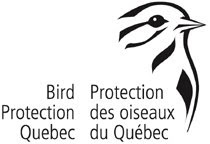Hi everyone,
Here at last is the email I was waiting for impatiently since the discovery a Semipalmated Plover marked on 19 October in Kamouraska. I know that this capture had generated some interest within Ornitho-Qc, hence the importance of sharing it with you. The main lines:
Subject: marked Plover at Kamouraska
From: Yves Turcotte, Department of Biological Science and Technology, College La Pocatière
Hi Robin
Thank you for reporting your sighting of a “marked” plover which, thanks to a observer in the region, has reached me. This report helps increase our knowledge on migration routes and duration of residence of this species!
This juvenile Semipalmated plover has been captured and “marked” in St-Germain de Kamouraska on 16 September. “Marking” using combinations unique color bands (Pan American Shorebird Program) which
identifies each individual and to establish links between subsequent observations made by ornithologists and photographers (place and date) and individual characteristics (age, height, weight and sometimes, sex, determined by analysis of DNA content in a feather removed at the time of capture). Each report is very
precious! Feel free to send me any further comments of this kind (And photo if possible) that you may have in the future! To date, Birds that my students at the Cégep de La Pocatière (Techniques de Bioécologie) Technical Bioecology and I have “marked” in Kamouraska were found elsewhere in the estuary but also at the Bay of Fundy, New Jersey, Tobago, French Guiana and as far away as Brazil.
As for the coloration of the ventral surface, it is only meant increase the probability that a “marked” bird with colored bands is detected by ornithologists and photographers. Once it is detected, that's where we find the coled bands! This staining is not permanent and it will be gone forever when the moult is completed.
In addition, I have a favor to ask. Could you ask subscribers of Ornitho-Qc to report to Louise Laurin's Canadian Wildlife Service (Louise.Laurin AT ec.gc.ca), any sighting of shorebird carrying colored rings. She will then transmit the information to bander in question, whatever the species identified. If ornithologists had in their field notebook other observations of “marked” birds, they are always of interest, even if they go back several years!
Voici enfin le courriel que j'attendais avec impatience depuis la découverte d'un Pluvier semipalmé marqué, le 19 octobre dernier à Kamouraska. Je sais que cette capture avait suscité un certain intérêt au sein d'Ornitho-Qc, d'où l'importance de le partager avec vous. Voici les principales lignes:
Objet: Pluvier marqué de Kamouraska De: Yves Turcotte, Département des sciences et techniques biologiques, Cégep de La Pocatière
Bonsoir Robin!
Merci d'avoir signalé ton observation d'un pluvier marqué qui, grâce à un observateur de la région, m'est parvenue. Ce signalement contribue à augmenter l'état de nos connaissances sur la migration, routes et durée de séjour, de cette espèce!
Ce Pluvier semipalmé juvénile a été capturé et marqué à St-Germain de Kamouraska le 16 septembre dernier. Le marquage à l'aide de combinaisons uniques de bagues de couleur (Programme Panaméricain des limicoles) nous permet d'identifier chacun des individus et d'établir des liens entre les observations ultérieures faites par des ornithologues et photographes (lieu et date) et les caractéristiques des individus (âge, taille, masse et
parfois, sexe, déterminé par l'analyse de l'ADN contenu dans une plume prélevée au moment de la capture). Chaque signalement est donc très précieux! N'hésite pas à me transmettre toute autre observation de ce genre (et photo si possible) que tu pourrais faire dans le futur! À ce jour, des oiseaux que mes élèves du cégep de La Pocatière (Techniques de Bioécologie)
et moi avons marqués au Kamouraska ont été repérés ailleurs dans l'estuaire mais aussi à la Baie de Fundy, au New Jersey, à Tobago, en Guyane Française et aussi loin qu'au Brésil.
Quant à la coloration de la face ventrale, celle-ci n'a pour but que d'augmenter la probabilité qu'un oiseau marqué de bagues de couleur soit détecté par les ornithologues et photographes. Une fois celui-ci détecté, c'est là que les bagues nous apparaissent généralement! Cette coloration n'est pas permanente; il n'en restera plus rien lorsque la mue sera complétée.
De plus, j'aurais un service à te demander. Pourrais-tu demander aux abonnés d'Ornitho-Qc de signaler à Louise Laurin du Service canadien de la faune (Louise.Laurin AT ec.gc.ca), toute observation d'oiseau de rivage porteur de bagues de couleurs. Celle-ci se chargera alors de transmettre l'information au bagueur concerné, quelque soit l'espèce repérée. Si des ornithologues avaient dans leur carnet de terrain d'autres observations d'oiseaux marqués, elles sont toujours d'intérêt, même si celles-ci remontent à plusieurs années! - Robin Gingras
Monday, October 25, 2010
Subscribe to:
Post Comments (Atom)





No comments:
Post a Comment